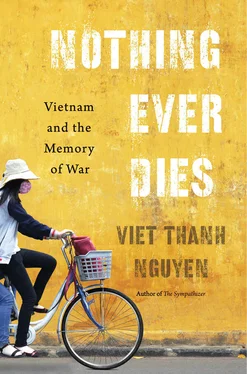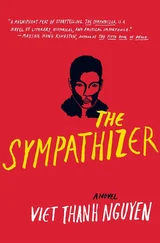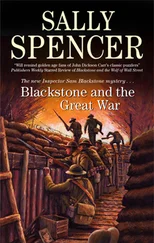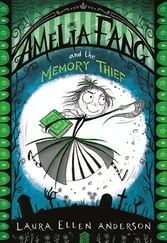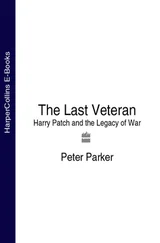Come home, then. That should be the message that the countries of origin send to their exiles in the future, through the way these countries deal with the dead. At the Bien Hoa cemetery, the dead lay ready to be called on once more to serve a national cause, this time of reconciliation. Meanwhile, in Quang Tri province, arduous efforts to excavate dormant bombs, mines, and shells have also uncovered the bones of the dead from both sides. In a sunbaked field, a demining squad that has searched meter by meter for this ordnance has also uncovered the remains of six or seven southern soldiers. They were buried in a local cemetery. Not far away, in Dong Ha, the remains of two northern soldiers were also recently found. My guide from the demining organization tells me that national reconciliation means we should not distinguish between northern dead and southern dead. He speaks without bitterness or melancholy, even though the French killed his paternal grandfather and the Americans killed his maternal grandfather. Bespectacled and in jeans and a t-shirt, my guide looks no different than any of the Vietnamese who return from overseas. But my embittered Vietnamese American compatriots, remembering their losses and their own dead, may not so readily bring themselves to share his sentiment. It is difficult for them when stories like this, remembered by refugee Hien Trong Nguyen, interfere:
When [my brother] died in 1974, he was only 22 years old. Five years after my brother’s death, the Communists plowed the cemetery for Southern soldiers, where my brother was buried, in order to build a military training center. My mother decided to exhume his body and move him. During the next few days, my parents, uncle, cousins, and I went to remove his body. When I first looked at his body, I was amazed and frightened to see that he looked as if he were only sleeping. His body was wrapped inside a plastic bag, and the coffin had been specially made so that water would not seep in. My family took his body and removed all the skin and flesh so that only bones remained. The skin came off just like a glove. The bones were washed and put in a smaller box. 29
Generosity comes easier when one has won, and the victorious find it in their best interests to be magnanimous to the defeated. I do not mention this to my guide as we watch the men in khaki probe the earth, their work slow and hot. I think we are both aware that survivors do not so easily forget history. What once happened here could still be happening for many, the past as explosive as any of the remnants buried in this land.
A BLACK WALL STANDS in the American capital, embedded in the earth. Inscribed on its surfaces are the names of over fifty-eight thousand Americans who fought and died in the war. For many visitors, the power of the wall arises from these names of the dead, which evoke these biblical verses: “There be of them, that have left a name behind them, that their praises might be reported. And some there be, which have no memorial; who are perished, as though they had never been; and are become as though they had never been born; and their children after them.” 1The black wall saves from oblivion the names of those soldiers who had been forgotten or at least ignored by their fellow Americans for a period of time. Although the wall’s critics despise its aesthetics, which they see as evoking the darkness of shame, many others see it as the most powerful of American memorials. 2Designed by the architect Maya Lin, the wall is a geographical site of memory that compels and depends on its verbal, visual pun: the sight of memory. Many things are seen at this site, with the three most important being the names of the dead, the presence of others, and the reflection of oneself as visitor in the wall’s dark mirror. The names call forth to visitors, who themselves, as pilgrims and mourners, call on these names and sometimes call them out. This site, these names, and these visitors create a congregation, a communal experience of memory that is visible and sometimes audible.
Given that the black wall has played an important role in how America remembers its war dead, it would be easy to mistake the black wall and the mourning it conjures as a pure expression of the ethics of remembering one’s own. The wall is the centerpiece and symbol of a mass American effort from the 1980s until the present to remember the American dead, a campaign born as a reaction to the civil war in the American soul that was America’s experience of the war, its most divisive since the actual Civil War. This division contributed to the decline in esteem of the American military and its soldiers. Many saw these soldiers as losers who fought in a dirty war that took the lives of innocents, civilians, and freedom fighters, and so it was that throughout the 1970s the war was a difficult subject for many to speak of, including veterans. 3Some of these veterans, inspired, perhaps, by the movements that struggled for civil rights and spoke out against the war, decided that they, too, should speak out for themselves and demand recognition. They led the campaign that created the Vietnam Veterans Memorial, its intention to encourage Americans to remember these soldiers as some of their own, rather than as others who evoked only disgrace and humiliation.
Various surgical procedures of memory have healed the wounded reputation of the American soldier. The black wall is the most symbolic — a cut and a wound in the earth, but also a scar and a suture. Politicians and presidents have visited the wall and praised these soldiers. Filmmakers and novelists fought the war again and again in movies and literature, casting these soldiers as the main characters. 4Whether they appeared as heroes or antiheroes, as was often the case, they demanded sympathy and empathy for their virtues and their failures. The rise in compassion for the American soldier among the American public helped to create a resurgence of patriotic feeling, providing solid evidence of how the arts of memory are shaped by the world and shape it in turn. This patriotic feeling has been fundamental to America’s increasingly pugilistic stance since the 1980s, when it began to test its revised, all-volunteer military with small adventures in Grenada and Panama. The early results against vastly outnumbered foes were good, and the American public did not reject these efforts; thus encouraged, the United States struck against Saddam Hussein’s forces in Kuwait. This Gulf War was an application of the lessons that some Americans learned from the earlier war: avoid guerrilla conflict and nation-building; refine American technological superiority; and apply overwhelming force in conventional land, sea, and air battles. With Saddam Hussein’s forces routed in spectacular fashion, President George H. W. Bush could claim: “By God, we’ve kicked the Vietnam syndrome once and for all.” 5
Presidents and pundits understand the “Vietnam syndrome” to be the fear of failure and the moral revulsion to war that have plagued Americans since their defeat in Vietnam. The shamed American soldier and the antiwar movement were symptomatic of this syndrome. Both had to be treated in postwar operations of memory, where absences became as telling as presences. Present in the black wall are redeemed American soldiers. Absent from the memorial are the casualties who are easier to forget, the veterans who suffer from trauma, or are homeless, or have committed suicide, as the memorial’s most astute critic, Marita Sturken, observes. Collectively, these postwar dead and wounded far outnumber the wartime deaths, but this nation, like other nations, has difficulty acknowledging them and their ills. Nations prefer that wars finish quickly, the wounds cauterized in memory through the conventionally understood “war story” rather than remaining open and infected. One version of the war story is captured in a catchy postwar slogan that might have been written by an advertising firm: Oppose the War but Support the Troops. As the historian Christian Appy notes, the slogan “has often been used as a club to dampen antiwar dissent.” 6The slogan implicitly evokes the memory among many Americans that they did not support their troops during the war in Vietnam and calls on them now to support the troops fighting in current wars. In doing so, the slogan also suppresses troubling questions. Perhaps one could support the troops if one only opposed the war on issues of foreign policy, or if one simply did not agree with the expenditure of American treasure on military adventurism. But if one opposed a war because it killed innocent people, then how could one support the troops who inflicted the damage? Do they not bear moral responsibility for killing? Might they not bear some political responsibility for a war that they implicitly supported through their votes, their attitudes, and their actions? The question of responsibility is particularly pressing for an all-volunteer army versus an army with many draftees, as was the case in Vietnam. Martin Luther King Jr. judged this draftee army, with its racially diverse soldiers, as one that behaved “in brutal solidarity” against the Vietnamese. Would not a volunteer army be even more prone to such a judgment?
Читать дальше
